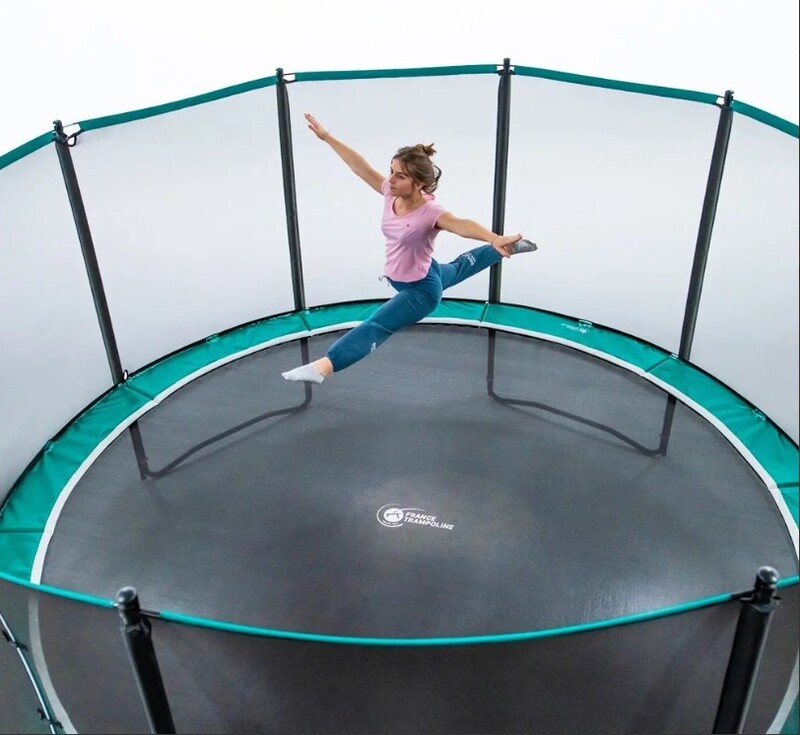Jump for Joy: Your Ultimate Trampoline Encyclopedia
Trampolines, invented in the 1930s, have become a popular recreational activity. They come in various types and require safety precautions, especially for children. Trampolining offers a range of benefits including improved cardiovascular health, coordination, muscle strength, and stress relief. It's effective for weight loss and burns more calories than walking. Regular trampolining can also enhance jumping ability.
Types of Trampolines and Their Benefits.

Trampolining has become a popular recreational activity for people of all ages. Whether you're a child looking for a fun way to burn off energy or an adult seeking an exciting workout, trampolines offer a versatile and engaging experience.
A Brief History of Trampolines
The concept of bouncing on a flexible surface for amusement dates back thousands of years. Ancient civilizations in China and the Inuit tribes of North America are believed to have used animal skins or materials like seal intestines to create rudimentary bouncing surfaces. However, the modern trampoline we know today was invented in the 1930s by George Nissen and Larry Griswold. Originally designed for acrobatic training, trampolines quickly gained popularity as a recreational activity.

Types of Trampolines
1. Backyard Trampolines
- Backyard trampolines are designed for home use and come in various shapes and sizes. They can be round, rectangular, or oval.
- They are typically made with a frame, a jumping mat, and springs that provide the bounce.
- Safety enclosures are commonly included to prevent users from falling off the trampoline.
2. Rebounder Trampolines
- Rebounder trampolines are smaller and designed for fitness purposes. They are often used for low-impact workouts and rehabilitation exercises.
- They are lightweight and portable, making them easy to store and transport.
3. Professional Trampolines
- These trampolines are designed for competitive athletes and are used in international trampolining competitions.
- They are larger and have more advanced features compared to backyard trampolines.
Safety Tips for Trampolining
While trampolining is a fun and exhilarating activity, it's important to prioritize safety. Here are some essential tips:
- Use a Safety Enclosure: Ensure your trampoline is equipped with a safety net or enclosure to prevent users from falling off.
- Supervise Children: Always have adult supervision when children are using the trampoline.
- Limit the Number of Users: Trampolines are safest when used by one person at a time. Multiple users can lead to collisions and accidents.
- No Flips or Somersaults Without Proper Training: Advanced tricks should only be attempted by individuals with proper training and supervision.
- Regular Maintenance: Check the trampoline regularly for any wear and tear. Replace damaged parts promptly.
- Jump with Bare Feet: Avoid wearing shoes or loose clothing while using the trampoline.
- Avoid Jumping in Extreme Weather: Don't use the trampoline in strong winds or during thunderstorms.
- Place the Trampoline on Level Ground: Ensure the trampoline is set up on a flat, stable surface to prevent tipping.
Benefits of Trampolining
Apart from being a source of entertainment, trampolining offers numerous health benefits:
- Improved Cardiovascular Health: Bouncing on a trampoline provides an excellent cardiovascular workout, improving heart health.
- Enhanced Coordination and Balance: Trampolining requires precise movements, which can help improve coordination and balance.
- Strengthens Muscles: Regular trampolining can help tone and strengthen muscles, including the legs, core, and back.
- Stress Relief: The rhythmic bouncing motion can have a calming effect on the mind, reducing stress levels.
- Low Impact Exercise: It's gentle on the joints, making it suitable for individuals with joint issues or those recovering from injuries.

People also ask (FAQ)
What are trampolines used for?
Is trampoline good for losing weight?
Why is trampolining good for you?
Can you lose belly fat on trampoline?
How many calories does 30 minutes on a trampoline burn?
What burns more calories walking or trampoline?
Does jumping on a trampoline make you jump higher?
What are trampolines used for?
Trampolines are used for various purposes, including recreational play, fitness and exercise, acrobatic training, rehabilitation, and competitive sports. They provide an enjoyable way to improve physical fitness, coordination, balance, and strength.
Is trampoline good for losing weight?
Yes, trampolining can be an effective way to aid in weight loss. It is a high-intensity, low-impact exercise that engages multiple muscle groups. Regular trampoline workouts can help increase metabolism, burn calories, and contribute to a calorie deficit, which is essential for weight loss.
Why is trampolining good for you?
Trampolining offers several health benefits:
- Cardiovascular Health: Bouncing on a trampoline elevates heart rate and improves cardiovascular fitness.
- Coordination and Balance: It requires precise movements, enhancing coordination and balance.
- Strengthens Muscles: It engages muscles throughout the body, promoting strength and toning.
- Low Impact: It's gentle on the joints, making it accessible for a wide range of individuals.
- Stress Reduction: The rhythmic bouncing motion can have a calming effect, reducing stress levels.
Can you lose belly fat on trampoline?
Yes, trampolining can help reduce overall body fat, including belly fat, when combined with a balanced diet and regular exercise routine. The high-intensity nature of trampoline workouts can contribute to burning calories and promoting fat loss.
How many calories does 30 minutes on a trampoline burn?
On average, 30 minutes of moderate trampolining can burn between 150 to 250 calories, depending on factors such as body weight, intensity of the workout, and individual metabolism.
What burns more calories, walking or trampoline?
Trampolining generally burns more calories than walking. The bouncing motion engages more muscle groups and elevates heart rate, resulting in a higher calorie burn compared to a typical walking workout.
Does jumping on a trampoline make you jump higher?
Yes, regular trampoline use can help improve leg strength, explosiveness, and overall jumping ability. The dynamic movements involved in trampolining can enhance muscle power and coordination, which can translate to higher jumps over time.
Remember, it's important to start any new exercise regimen at a comfortable pace and gradually increase intensity. If you have any existing health conditions or concerns, consult a healthcare professional before starting a new exercise routine, including trampolining.
Trampolining is a versatile and enjoyable activity that can be enjoyed by individuals of all ages. By following safety guidelines and choosing the right type of trampoline for your needs, you can experience the numerous physical and mental benefits it offers. Remember to always prioritize safety and have fun bouncing!



